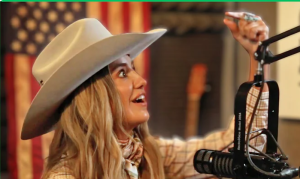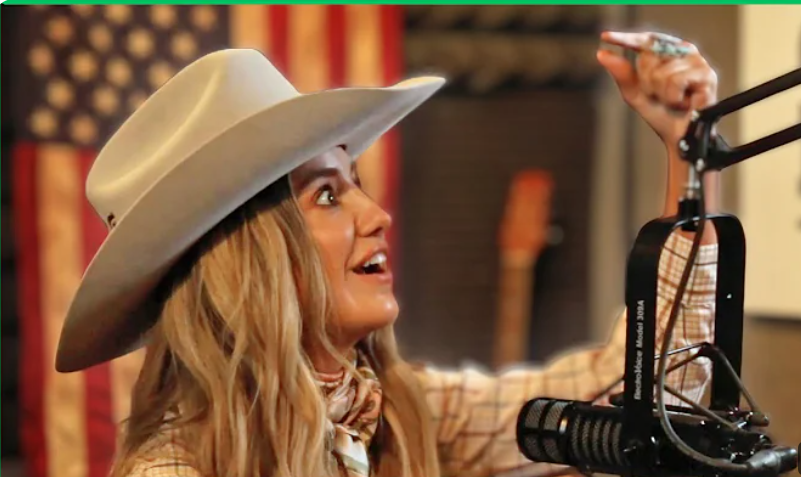Music
Lainey Wilson Reflects on Disturbing On-Stage Incident: A Powerful Response to Disrespect
1. The Shocking Incident: Lainey Wilson Speaks Out
In a shocking and unsettling moment during one of her live performances, country music star Lainey Wilson revealed that she was spit on while performing for a crowd. This incident, which took place in 2024, has since sparked discussions about the disrespect musicians face on stage and how such behavior impacts artists and their sense of safety while performing. Wilson, known for her authenticity and powerful voice, didn’t let the incident go unnoticed. Instead, she used the platform to speak out against the disrespect she experienced, calling for accountability from both fans and the industry at large.
For an artist like Wilson, who has worked hard to build a devoted fanbase, this kind of behavior is especially hurtful. While performing on stage is meant to be a connection between the artist and their audience, moments like this remind us of the vulnerability that performers face in such public settings. Wilson’s response to the situation reflects her resilience, but it also opens up important conversations about the boundaries between artists and fans and the need for respect during live performances.

2. The Toll of Disrespect on Musicians: More Than Just an Isolated Event
Lainey Wilson’s incident is not an isolated one in the world of live performances. Over the years, many artists across various genres have faced disrespectful behavior from the audience, ranging from objects being thrown on stage to verbal harassment and, in this case, physical disrespect. This type of behavior can take a serious emotional toll on musicians, who are often expected to brush off these incidents and continue performing as if nothing happened. However, as more artists like Wilson speak out, it’s becoming clear that these actions can have lasting effects on the mental and emotional well-being of performers.
The pressure to maintain professionalism in the face of such incidents can be overwhelming. For many musicians, the stage is a place where they express their art and connect with their audience, but it can also be a place where they face unexpected disrespect. This dynamic creates a conflict between the joy of performing and the fear of what could happen in unpredictable situations. Wilson’s experience highlights the need for stronger protections for artists and a zero-tolerance policy toward this type of behavior at live events. It’s not just about one incident—it’s about addressing a larger issue in the entertainment industry that affects artists at all levels.
3. Lainey Wilson’s Powerful Response: Taking a Stand
Rather than letting the incident diminish her spirit, Lainey Wilson used it as an opportunity to take a stand. In her public response, she made it clear that such behavior would not be tolerated and that respect is essential for both the performer and the audience. Wilson’s reaction is emblematic of the strength she has shown throughout her career, as she continues to rise in the country music scene despite challenges. Her message was not just for the individual who disrespected her, but for the broader public, emphasizing the need for a cultural shift in how audiences interact with performers.
Wilson’s response is an example of how artists can use their platform to demand better treatment and call for accountability. By addressing the incident head-on, she demonstrated resilience and professionalism, showing her fans and the public that she will not be silenced by disrespectful actions. Her message resonates with other performers who have faced similar situations, reinforcing the importance of solidarity among musicians in the face of adversity. Wilson’s stand is a reminder that artists deserve respect and that their boundaries must be honored, no matter how big or small the stage.
4. The Industry’s Responsibility: Ensuring Safe Spaces for Artists
Incidents like the one Lainey Wilson experienced raise important questions about the responsibility of the music industry and event organizers in creating safe environments for performers. While the audience’s behavior is largely beyond the control of the artist, venues and organizers play a crucial role in ensuring that safety protocols are in place to prevent such incidents. This includes not only physical barriers but also clear policies that discourage disrespectful behavior and hold individuals accountable when such actions occur.
The rise of social media has given artists a platform to share their experiences, but it’s also important for the industry to respond with tangible actions. For artists to feel safe on stage, event organizers must take a proactive approach to addressing disrespect and misconduct from the audience. This could include increasing security presence, implementing stricter audience conduct policies, and providing a clear path for addressing incidents when they occur. The responsibility to create a respectful and safe environment should be shared between the audience, the industry, and the venues that host live performances.
5. Moving Forward: Respect and Accountability in the Entertainment World
Lainey Wilson’s experience serves as a wake-up call for the entertainment industry and fans alike. It underscores the need for a collective effort to promote respect, accountability, and safety in live performances. As more artists speak out about the disrespect they face, it’s becoming increasingly clear that change is necessary. The music industry has a responsibility to protect its performers, and fans must understand the importance of respecting the boundaries of the artists they admire.
For Wilson, the incident has become a defining moment in her career, not because of the disrespect she faced but because of how she responded to it. Her refusal to let the behavior slide and her determination to raise awareness about the issue have set an example for others. As the entertainment world continues to evolve, Wilson’s message will undoubtedly contribute to the ongoing conversation about how to create a more respectful and supportive environment for all performers. Respect, after all, is at the core of any meaningful connection between artists and their audience.
From: Doublejoydesigns

